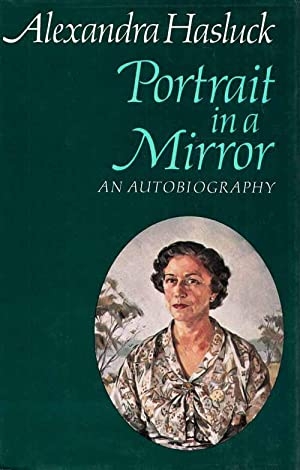Archive
Carmel Oakley reviews 'Arthur Streeton: The art without the man' by Arline Usden
The best things about this book are the paintings, the photographs, and the paper. The worst thing is the prose. But does this matter, you may well ask, in a book obviously designed to travel rapidly from the coffee table to the wall – with its large size format and convenient disintegration at first read? It’s the pictures we want, not the prose.
... (read more)Leo Hawkins reviews 'Power Conflict and Control in Australian Trade Unions' edited by Kathryn Cole
Kathryn Cole’s book sets out by means of thirteen contributions to evaluate ‘two assertions about trade unions (which) are pervasive’. These are that they are very or too powerful, and that they are usually the aggressors in industrial disputes. Its conclusion is that unions are more sinned against than sinning, or, to paraphrase the words of Evelyn Waugh in Brideshead Revisited describing Lady Marchmain, ‘they are saintly without being saints’.
... (read more)Beatrice Faust reviews 'Her Unknown (Brilliant) Career: Miles Franklin in America' by Verna Coleman
Verna Coleman’s biography of Miles Franklin is extremely valuable but somewhat flawed. Those parts of Franklin’s life that are germane to the mateship tradition and the development of a nationalist Australian literature have been widely canvassed – although they take in only her precocious youth and mellow old age. The crucial decades between 1906 and 1927 are an almost total blank, even though they include the writing of her most important journalism and all but one of the novels on which her reputation rests. (Marjorie Barnard scarcely even tried to fill that blank with her 1967 biography.) Ms Coleman has restored those lost years and we must all thank her.
... (read more)Jocelyn Clarke reviews 'Skills, Outlooks and Passions: A psychoanalytical contribution to the study of politics' by A.F. Davies
There is a Melbourne school in the study of politics, a group of scholars whose work in biography, and in public opinion and public administration studies has been strongly influenced by psychoanalysis, and stresses the importance of unconscious motivation. The Melbourne school is a loose grouping; some of its members would deny that it has a leader, but it owes its existence, and much of its success, to Professor A.F. Davies of Melbourne University’s Political Science Department.
... (read more)Bobbie Kaye Gledhill reviews 'Nero’s Poems' by Geoffrey Lehmann
What a delight it is to read a collection of contemporary poetry which is not only good but entertaining and capable of arousing emotions – and the delight is intensified because the experience is so rare. Most Australian poets that I have read recently seem to think that the exercise of writing, for example ‘happy days / lost in lust’ justifies them in putting ‘poet’ instead of ‘esq.’ after their names. Geoffrey Lehmann is not one of these. On the strength of his recent book, Nero’s Poems: Translations of the Public and Private Poems of the Emperor Nero, published by Angus and Robertson, it can be seen that Mr Lehmann justly deserves the title ‘poet’, even though, for the duration of the book, we are asked to suspend our belief and attribute the poems to the Emperor Nero himself.
... (read more)Stephen Murray-Smith reviews 'Mucking Around: Five continents over fifty years' by Naomi Mitchison
In this, her fourth autobiographical volume, Naomi Mitchison takes on a difficult task – that of making travellers’ tales interesting. Her first three autobiographies dealt with childhood, youth, the between-war years. She demonstrated great literary skills in selective recall and in creating the wholly misleading impression that this was an artless narrative. In fact she gave us a brilliant account of the lives of a section of the British upper bourgeoisie, and the moving and honest story of her own growth into political radicalism.
... (read more)Kate White reviews 'Portrait in a Mirror: An autobiography' by Alexandra Hasluck
Following her husband’s excellent autobiography of his early years, Mucking About (1977), Alexandra Hasluck’s own life story has been eagerly awaited. And it has been worth the wait. Portrait in a Mirror is one of only a handful of good autobiographies by Australian public figures. Its 322 pages are full of colour, with some excellent passages of prose, particularly her warm, evocative descriptions of the Australian countryside. Hers is essentially a feminine, empathetic view of the world.
... (read more)In the Australian administrative tradition, Dr H.C. Coombs is a remarkable survivor, a maximalist and an innovator, not least in his· preparedness to write in public. The key figure in the Post-War Reconstruction brains trust which flourished under Curtin, Chifley and Dedman in the 1940s, he became Governor of the Commonwealth and then the Reserve Bank for twenty years and then entered a new creative phase in the post-Menzies and the Whitlam years.
... (read more)Australia’s need for a definitive history about its national trade union centre has been handsomely filled by Jim Hagan. His exhaustively detailed study must become the base for future researchers who will seek to assess what happened in our times.
... (read more)The four books reviewed here may be divided into two categories: the first, consisting of The Gosses: An Anglo-Australian Family, by Fayette Gosse, and Dinkum Mishpochah*, by Eric Silbert, is family biography, while the second, into which fall The Tanner Letters, edited by Pamela Statham, and Don Charlwood’s The Long Farewell, is the reconstruction, by means of such primary sources as letters and diaries, of the Australian past. Though these are very broad classifications, they serve to highlight the differences as well as the similarities between the members of each group.
... (read more)








